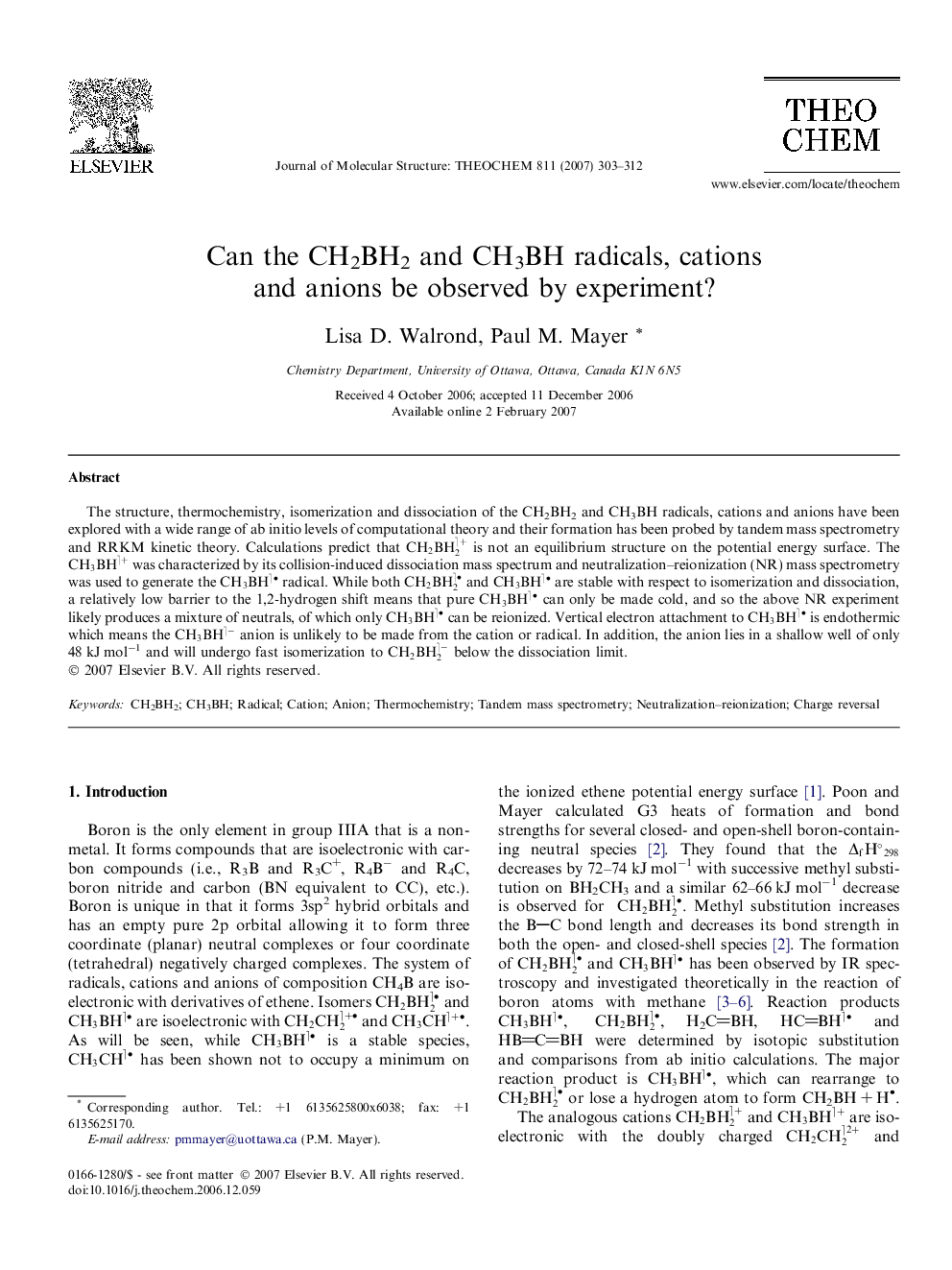| Article ID | Journal | Published Year | Pages | File Type |
|---|---|---|---|---|
| 5418733 | Journal of Molecular Structure: THEOCHEM | 2007 | 10 Pages |
Abstract
The structure, thermochemistry, isomerization and dissociation of the CH2BH2 and CH3BH radicals, cations and anions have been explored with a wide range of ab initio levels of computational theory and their formation has been probed by tandem mass spectrometry and RRKM kinetic theory. Calculations predict that CH2BH2â+ is not an equilibrium structure on the potential energy surface. The CH3BHâ+ was characterized by its collision-induced dissociation mass spectrum and neutralization-reionization (NR) mass spectrometry was used to generate the CH3BHâ
- radical. While both CH2BH2â
- and CH3BHâ
- are stable with respect to isomerization and dissociation, a relatively low barrier to the 1,2-hydrogen shift means that pure CH3BHâ
- can only be made cold, and so the above NR experiment likely produces a mixture of neutrals, of which only CH3BHâ
- can be reionized. Vertical electron attachment to CH3BHâ
- is endothermic which means the CH3BHâ- anion is unlikely to be made from the cation or radical. In addition, the anion lies in a shallow well of only 48Â kJÂ molâ1 and will undergo fast isomerization to CH2BH2â- below the dissociation limit.
- radical. While both CH2BH2â
- and CH3BHâ
- are stable with respect to isomerization and dissociation, a relatively low barrier to the 1,2-hydrogen shift means that pure CH3BHâ
- can only be made cold, and so the above NR experiment likely produces a mixture of neutrals, of which only CH3BHâ
- can be reionized. Vertical electron attachment to CH3BHâ
- is endothermic which means the CH3BHâ- anion is unlikely to be made from the cation or radical. In addition, the anion lies in a shallow well of only 48Â kJÂ molâ1 and will undergo fast isomerization to CH2BH2â- below the dissociation limit.
Keywords
Related Topics
Physical Sciences and Engineering
Chemistry
Physical and Theoretical Chemistry
Authors
Lisa D. Walrond, Paul M. Mayer,
